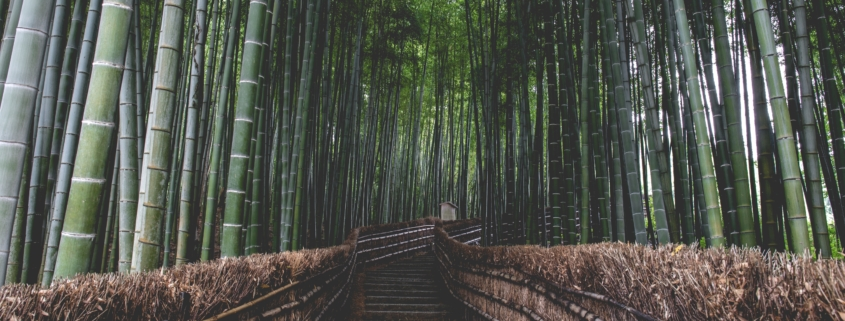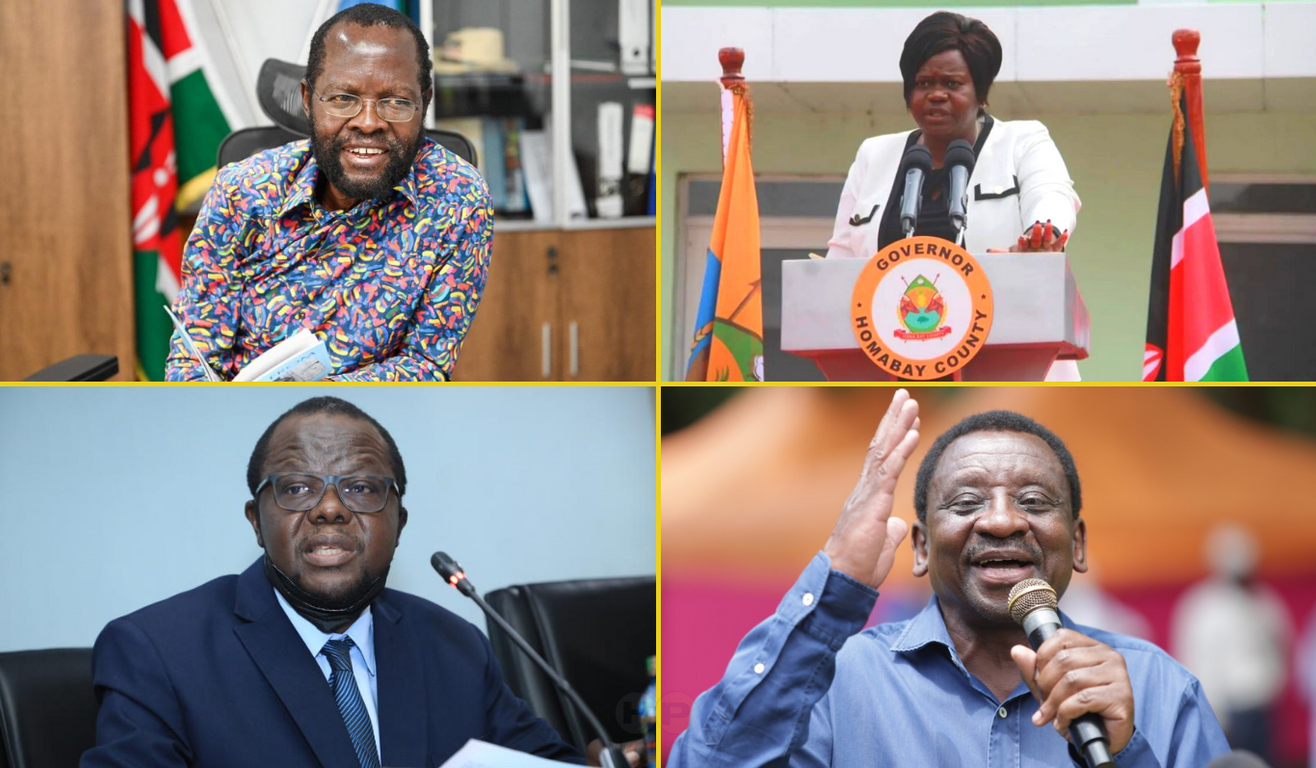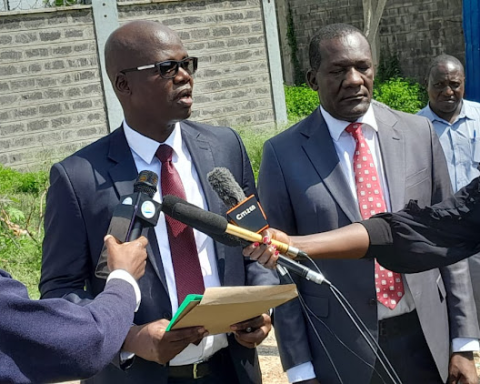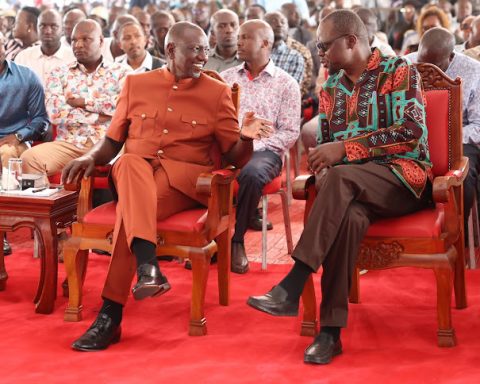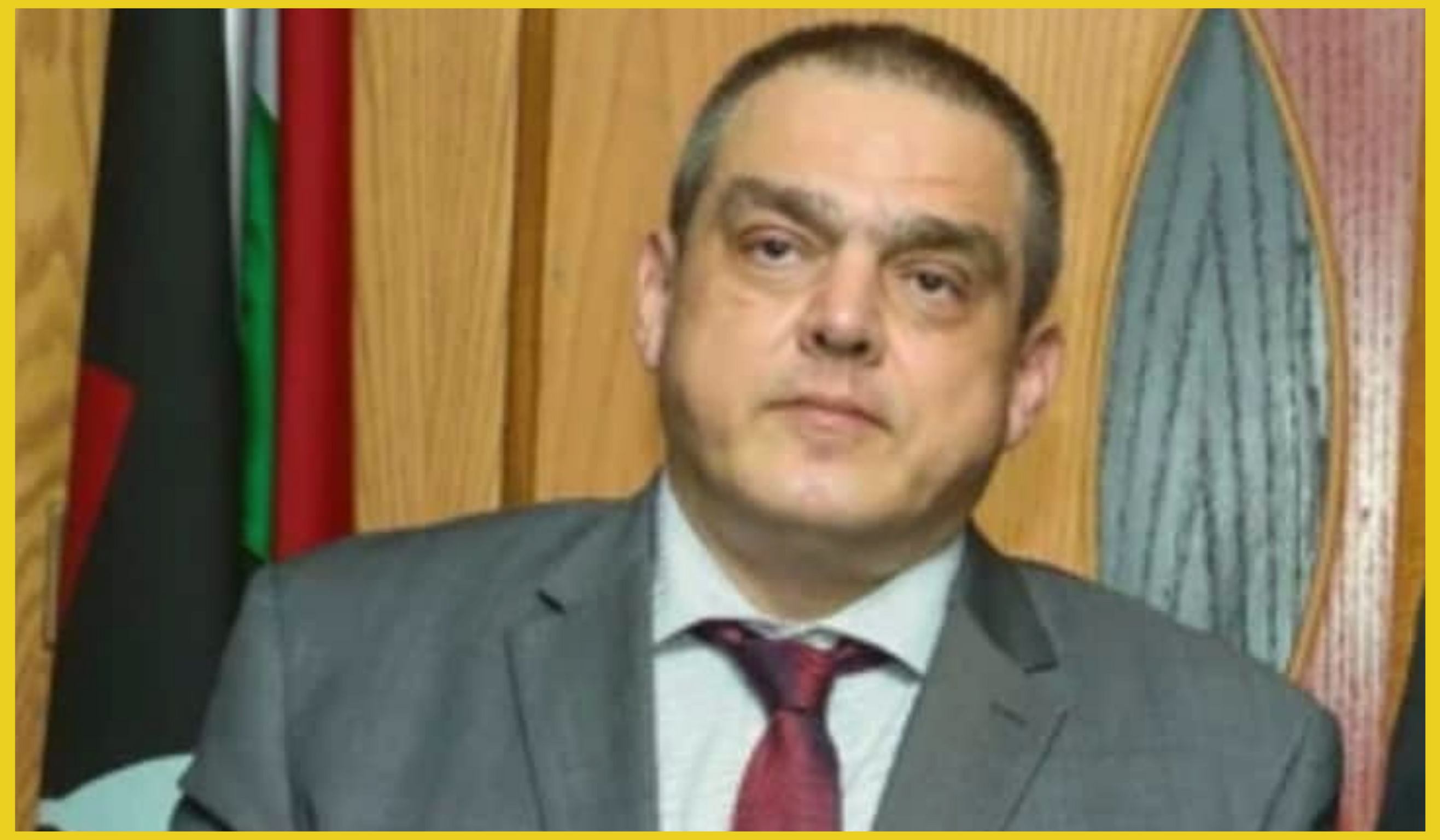It is almost a year since Kenyans elected their governors all across the country and there has been a lot of pressure at the national level for Ruto to do what is right and helpful for Kenyans to have better living conditions.
The 47 governors have been having a free run and yet in terms of development, the governors and how they run their counties have a real, immediate, and very direct impact on the lives of Kenyans everywhere in the country.
In fact, the governors have been doing a lot of mess in the country and we don’t pay much attention to them. It is almost like Kenyans forgot why they fought so hard to have devolution and counties to do things at the local level.
Kenyans have not been challenging the governors to do their job and be accountable to those who elected them. We are used to political dictatorship from the presidency in Kenya now lasting 60 years, so we fight them all the time and give a free ride to our governors. We have to shift our emphasis and look at what our governors are doing or failing to do.
That is why I was very happy to see that Luo governors are planning to have a meeting to strategize how to develop the whole region. I have been getting nightmares looking at what is going on in Siaya county which is my home. I knew the last governor Cornel Rasanga who happens to be my neighbour in Bondo town and we knew even before he was elected that he was a completely useless guy, so we never expected anything from him he delivered his nothing.
When James Orengo got elected as the Governor, a lot of Siaya residents expected him to do great things for the county. I was personally very happy to see him win that seat because of his high-profile commitment to human rights and development in the country which he has championed for decades right from his days at the University of Nairobi as a student activist and later on as a national leader in the all-out war to liberate the country from the Moi dictatorship.
I was a little nervous when Orengo was elected as our governor because many folks in Siaya say that Orengo knows more about Nairobi than Siaya because he doesn’t live in the county, but we figured he will sort that out pretty quick because he is a hands-on kind of guy.
Today as Siaya residents we face the embarrassment of having a county where the governor and his deputy are engaged in a public war where the deputy governor Oduol has now been impeached by the Siaya MCAs and Oduol is now fighting for his life claiming that Orengo is engaged in big-time corruption and stealing money from the county. Whatever happens with the issue we will find out.
Two things are clear about that mess in Siaya County. One is that the Ruto mob in the senate and across the country are thrilled to have this public war within the Siaya county government. The more the Ruto regime can make Siaya ungovernable and dysfunctional the better for them.
The second and even bigger problem for Siaya here is that nobody in the international NGOs that can help develop the area is going to want anything to do with such a crazy and dysfunctional county government. The truth is that counties have a great potential to negotiate and make deals with NGOs all across the globe as well as international business corporations. Look at what Kisumu governor Ayang’ Nyong’o has done which could be a big game changer for the lives of Kisumu residents.
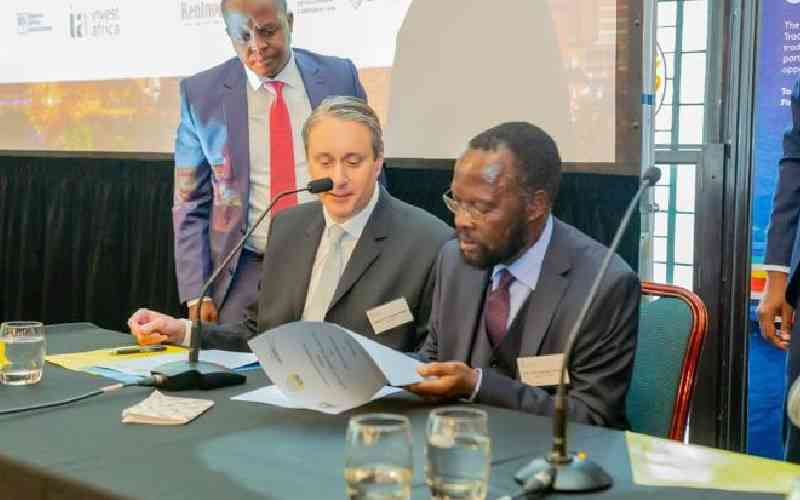
Governor Anyang Nyong’o signed a Sh31 billion co-investment partnership between United Green (UK) and the County Government of Kisumu.
Kisumu’s quest to improve food security has received a boost with the signing of an agreement with a British-based strategic investment group to increase agricultural production by Sh31 billion.
The administration of Governor Anyang’ Nyong’o believes the deal is a significant step towards transforming the devolved unit’s agro-food capital and will be critical in opening up avenues for expanding food production.
The deal was signed in London, United Kingdom, with United Green, a British-based private strategic investment group, in an event attended by Trade CS Moses Kuria and Governor Nyong’o yesterday.
Kuria said the deal will see the start of a flagship agricultural fin-tech programme for rural communities, high productivity, climate-smart farming, and the establishment of the state of the art agro-industrial facilities.
“This venture will be the largest and most modern integrated agri-food and services programme and operation in Kenya. It will position the project as the leading strategic player in the development of Kenya’s high-potential agricultural sector,” said Kuria.
The CS said the venture’s primary farms would integrate with 100,000 hectares of surrounding farming communities through a smallholder farmer scheme to increase their productivity and provide support on sustainable farming methods.
Agri-food system
“Some 20,000 rural households are to be incorporated in the new agri-food operating system, and at least 5,000 indirect jobs will be created when the integrated enterprise is at full capacity,” added the CS.
Pre-production activities of the project are expected to commence at the start of the next financial year.
“This is a landmark joint venture that will change the food security situation in the country significantly. The county government will do its part for the achievement of this noble objective,” said Nyong’o.
The governor said the lead partners in the project – United Green and the national government’s Ministry of Trade, have shown the strongest commitment to the success of the collaboration.
“This project will not only address the food security in the region but will offer thousands of job opportunities to people living in the catchment areas. As a government, we are committed to availing land needed,” he said.
According to the governor, the investment will further support the national governments’ commitment to increasing productivity, youth participation and employment within the development of local agriculture and associated industries.
He said it would also increase a strong demand for high-quality, safe food products.
Nyong’o said the project would also deliver the largest and most modern integrated crop and agro-industrial processing system in Kenya.
Here is the Kisumu government signing another agreement with Fortis hospitals in Delhi, India to strengthen sickle cell management in Kisumu. The collaboration will see Fortis help in setting up a Bone Marrow Department at Jaramogi Oginga Odinga Hospital and our train doctors and nurses in bone marrow transplant. This is how counties can work and in order to do that every governor needs a clean and efficient government that can attract NGOs and investors.
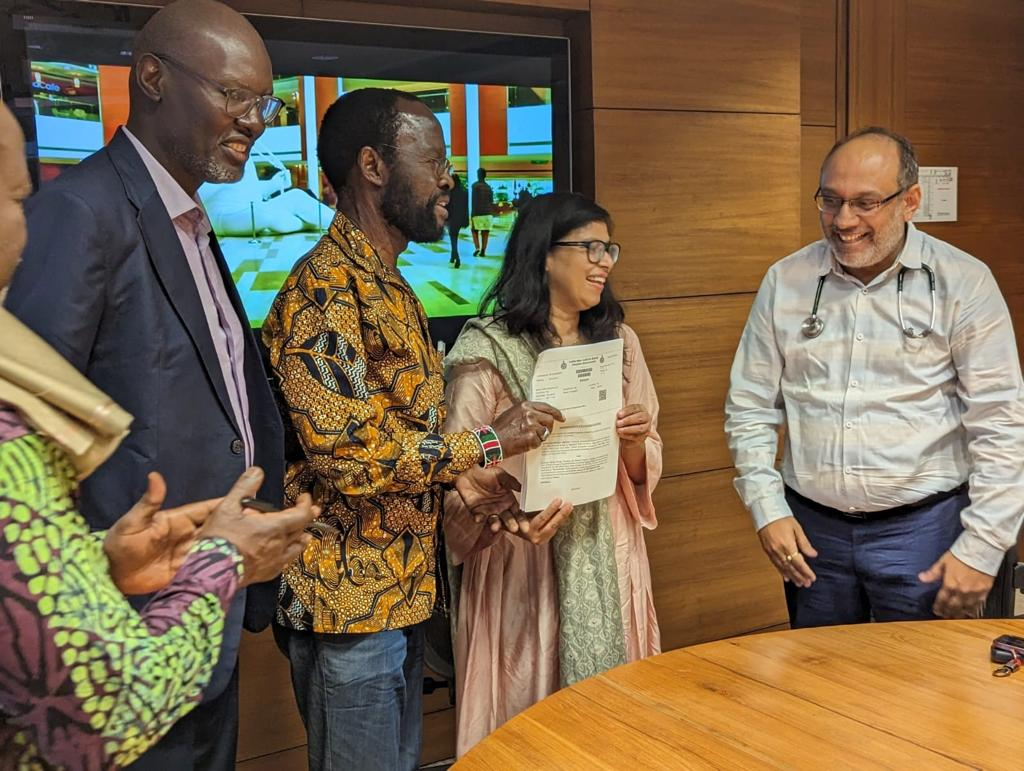
Looking at all aspects of development, Kisumu City is doing very good and things could get a whole lot better for them, many congrats to Governor Nyong’o who should take the lead in working with his fellow governors from the region. These governors have to understand that they are really our presidents on the ground. Ruto is not going to do anything for them and their constituents.
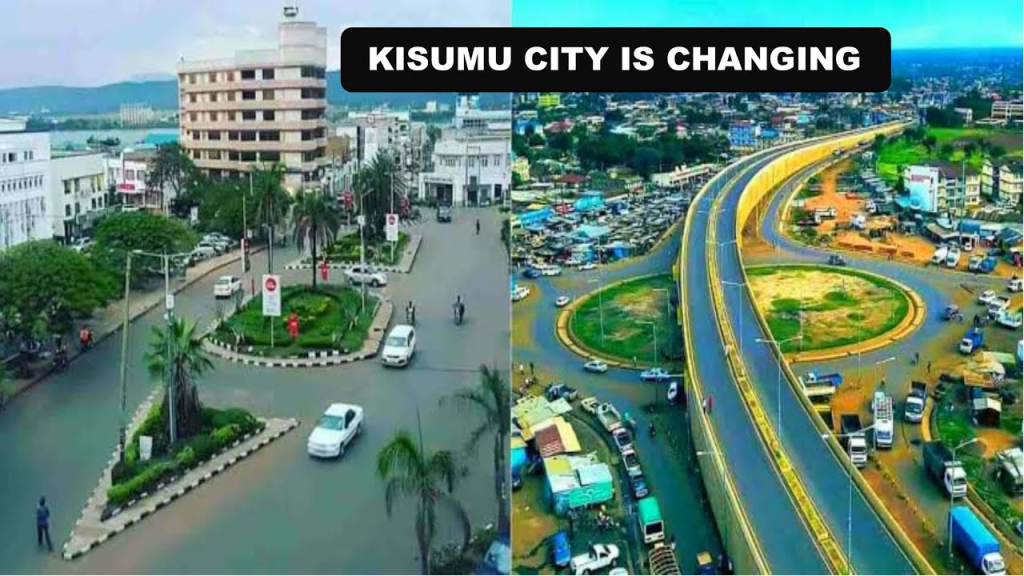
Here is a development proposal I have worked on and am planning to send to our Siaya government in terms of developing the county and moving us to the next level. I think it can be applicable to the whole Nyanza region if all the governors can work together.
We developed this plan sometime back and now we have registered it as an NGO and we are getting ready to get things moving on the ground. I think this if implemented can be of great benefit to us in Bondo and it can be applicable to all areas of Nyanza. Nobody will ever bring development to us and when I am in Bondo I see development everywhere.
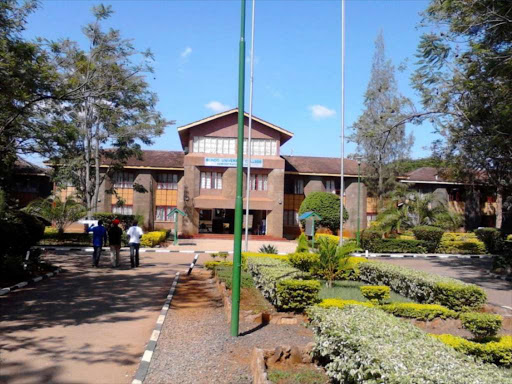
In fact, Bondo town is going through unimaginable development as we speak and everywhere you turn somebody is building something. Construction work in Bondo is phenomenon and the Jaramogi Oginga Odinga University in Bondo town with a student of population of 10,000 has created its own dynamics in the construction business in the exploding town.
In my considered view, there is no other place in the world with such an explosive development capacity as Bondo town right now. Maybe I am biased but go there and see for yourself if you can and put your money there. You will be very happy with that investment. Forget all that nonsensical talk about Luos sitting next to the lake waiting for fish to jump into their mouths. Those folks are doing some amazing things and that is why you never see people lining up to get food from politicians.
Everywhere in Bondo town huge buildings are coming up. It is really astonishing what they are doing there in the in the last twenty years.
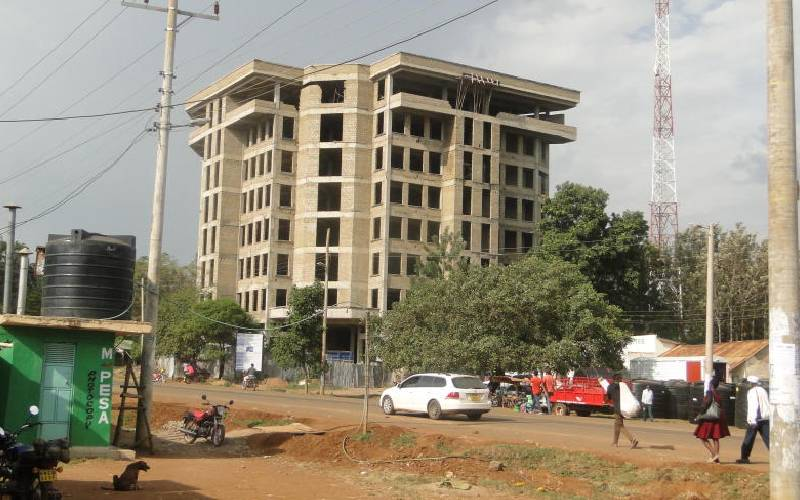
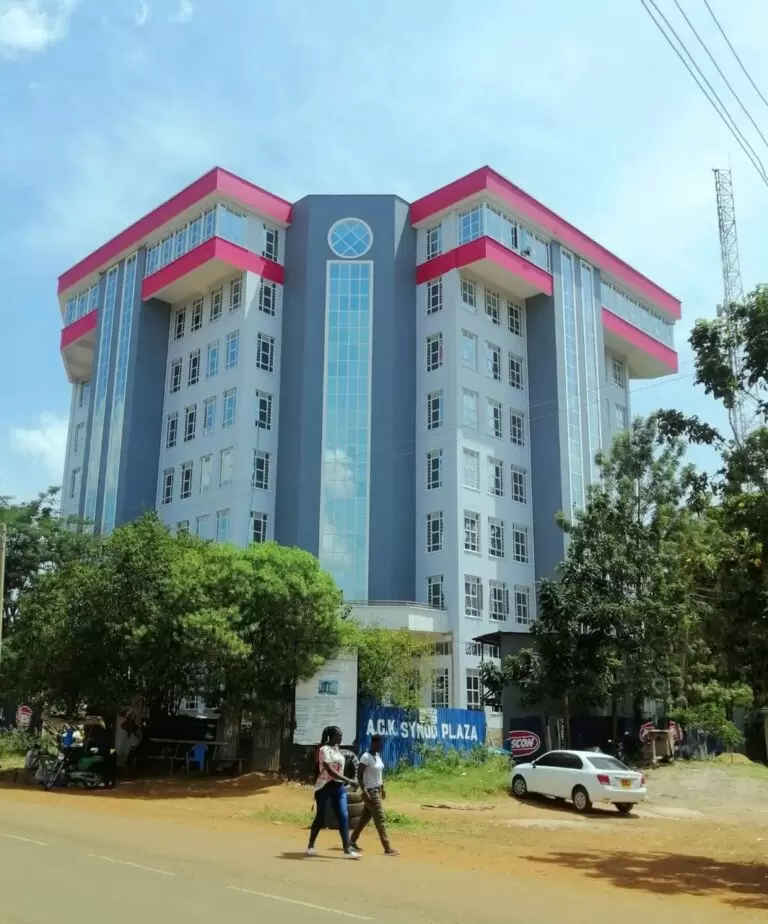
So here are our plans to take us to the next level as outlined in our NGO BORUSTRADA.
BONDO RURAL STRATEGIC DEVELOPMENT AGENCY (BORUSTRADA)

Bondo Market Development (BMD).
- Building the market infrastructure.
- Build the market stands for merchants to display and sell their products. This should be done in organized rows leaving space for customers and traders to move around the market. That starts from the main road in Bondo Town with a lot of traders down to the centre of the market which presently is half open market with structures and buildings in the main market.
- Build wall around the main market for safety of traders’ goods stored in the market and to help with the overall planning of the market space.
- Build storage facilities for each trader with a stand. The storage can be put in decks with one over the other to create more space.
- Work with the national government, the county, the Bondo Municipality and international donors to develop solar powered electricity for the whole market. At a time when the whole world is trying to address climate change it is necessary to try to get solar powered energy for the market.
- Health and Safety measures to be put in place. Keep the market clean all the time. Removal and disposal of waste. Put waste containers in the market and arrange for timely disposal by the municipality. Make the market sparkling clean from the road to the main market.
- Fire Prevention and fire-fighting machinery to be provided and available at the market. Work with traders and customers on what to do should there be a fire breakout at the market and do fire drills.
- Bondo Home Farming Outreach.
- Register all farmers in Bondo area.
- Find out their immediate needs to farm their land starting from ploughing and water availability for the crops
- Put vegetable production in the frontline. Kandhira, cabbages, osuga, dek, mtoo, ginger, arrow roots, sweet potatoes, green onions, tomatoes and all of it.
- Start with volunteer farming projects by ploughing their farms.
- Develop market manufacturing products from the fruits and vegetables.
- Provide seeds to the farmers by establishing Bondo Seeds to Framers project.
- Community Seeding Project
- Provide fertilizers to the farmers and technical support from national farming experts.
- Produce “Roast Tomatoes” with chillis. Kenya produced. Have chilli packages for export and local use with that. I am going for it.
- Bondo Green Project.
- Start with 1 million tree seedling plan from Nyakasanga farm in Bondo.
- Tree farm to be mainly fruits, mangoes, avocado, oranges, bananas, maringas, chua,
- Vegetables everywhere in the small village farms for food and export
- Plant millions of mambo trees everywhere particularly along Yala river and all water catchment areas in Bondo and Siaya including as fences.
- Use the bamboo trees as furniture material for beds, chairs, tables and natural decorations all over the Siaya County. Let us build on the Climate Change economy because we have the capacity to do so and it is good for everybody.
- No piece of land in Siaya county should be without a tree, a vegetable, a fruit planted on it. That will be our climate change and green plan for Siaya people and the country.
- Build the Bondo Market Bakery Products
- Bakery is the most basic form of food. You take flour of any kind and turn it into bread and other bakery products that people eat all over the world.
- Set up two bread flour silos in Bondo Market.
- Bondo Bread makers will buy their bread flour from the silos everyday. Without silos local bakeries are impossible.
- Develop safe bread making bakeries at the market for local use and to be sold to the schools and others who need bread
- Build the flour silos at the market and Bondo will produce bread for everybody.
- Bread producers at Bondo market will buy flour from the Silos run by Bondo Market Management.
- Traders cannot make bread because it is too expensive to buy wheat flow from the producers. The Silos will enjoy the economies of scale by providing bread flour for many traders in the market and the town
- This plan can turn Bondo Town into a major bread and other bakery product producers. That is what value added economy is all about. You make your own bread and sell instead of just hawking bread from other producers in Nairobi and elsewhere. It starts with building silos outside the market to store the unga for bread makers inside the market. The silos can be set up by the county government because individually it is not possible for traders to set that up.
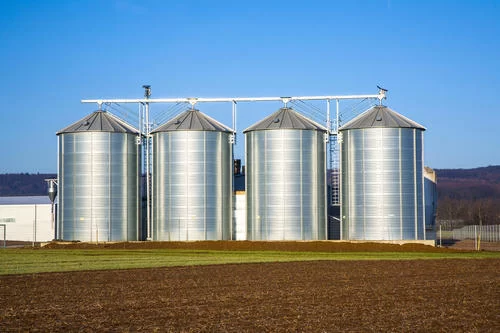
- Bondo Market Health Centre:
- Build a public health centre for the market jus there next to the Bondo football stadium which has been taken over by the market
- Have the Health Centre available to traders and customers at the market
- Let the users and service providers figure out the best way to pay for it.
- Develop preventive care programs on healthcare problems like Emergency Care, COVID 19 Prevention and Regulations, HIV, Cholera and other health problems the Kenyan communities who are part of the market face.
- Siaya County And Bondo Solar Energy for All (SOEA)
- Work with national government to bring solar powered electricity to Siaya County towns, hospitals, schools, markets, street lights and homes of regular citizens who have never had electricity in their lives.
- Involve the International community in a comprehensive climate change economic project for the good of all. Real and affordable electric power for Kenyans while preserving the environment. Good in both ways.
- Bondo Beach Front and fishing Industry
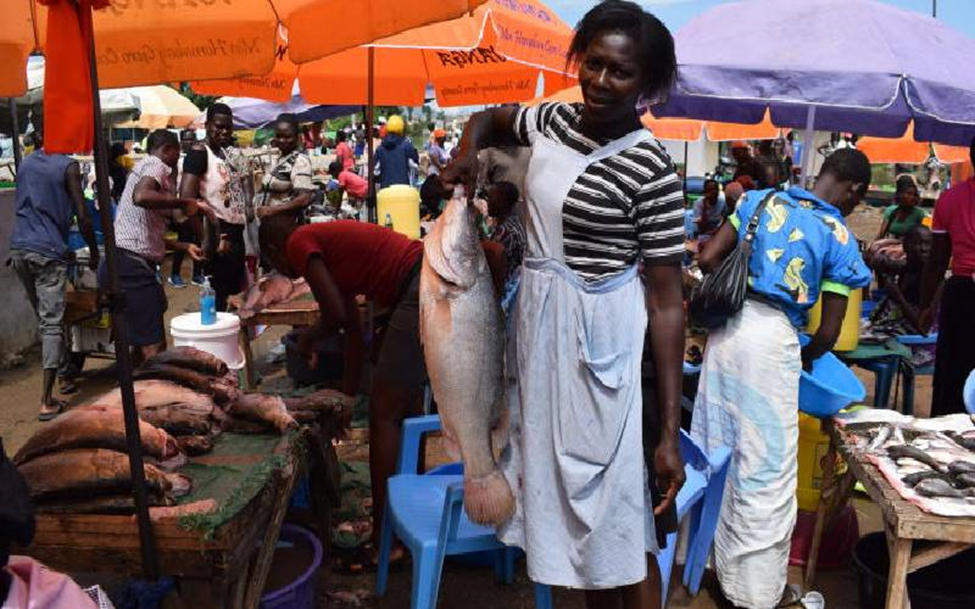
- Make the Blue Industry of trading in the fish industry across Lake Victoria a legality
- Make fishing safe for the fishing folks and the lake by using electric fishing gear instead of the oil gear used now which pollutes the lake and kills fish in the lake
- Build safe fishing depots and holding ground at the fishing beaches
- Build solar powered cooling systems for fish storage at source.
- Work with investors to build fish processing plants at source like in Homa Bay, Kisumu, Usenge and of course in the coast like Lamu, Mombasa and elsewhere.
- We are throwing our fish away because we cannot process the fish for export. That is economic suicide. Process the fish, build cooling and storage facilities, package your processed fish well and use that for the local market and for export around the world.
- We have the lake and the fish, you can’t buy that but we have to use them both wisely for economic development in the region and beyond.
- Invest in fish farming one of the fastest growing food industries in our country.
Example: St Lawrence Market in Toronto.

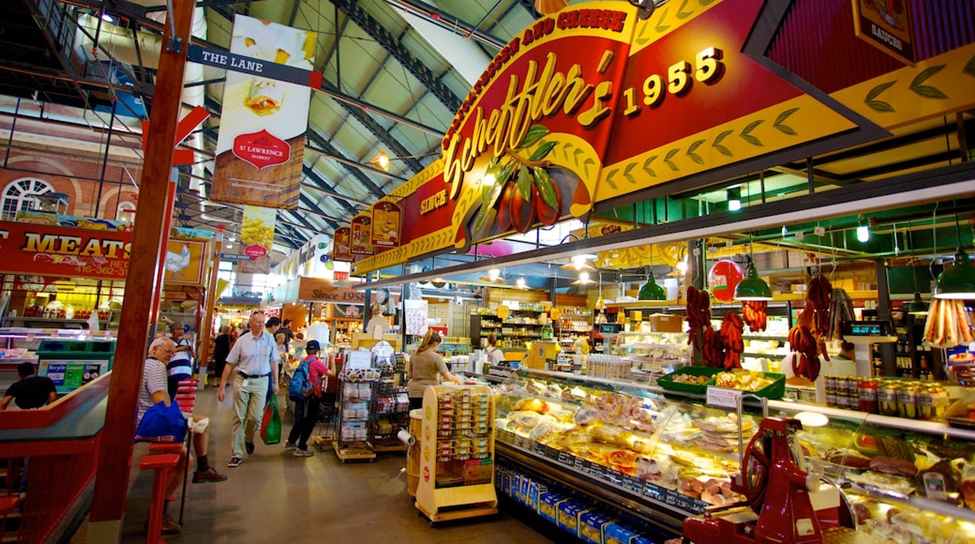

This is St. Lawrence Market in Toronto one of the oldest and most loved farmers market in Canada. It is right next to where I live. You can get anything and everything from that market and they are just completing a new state of the art market next.
Inside the market is a complete food production and processing industry and you can get anything from there.
They are just finishing a new St. Lawrence Market so they can have two of them. One built more than 100 years ago which is a modern day market and food production centre and then they are putting up this crazy one next to the old one.
It is a farmer’s and food market in the biggest city in Canada and they have proved why the country needs what they provide to farmers and to consumers of food in Canada.
Inside St. Lawrence Market is a food industry for everything you need to eat and the traders have perfect outlets for their products. The emphasis is on locally produced food products all over Canada. You want the best fish in Canada you go there. You want the best fruits and vegetables you know where to go.
BORUSTRADA plans to build a market like this in Bondo town from our own market which has been around for over 60 years. And this can be extended to all Siaya municipalities.
Let us produce our food, keep it safe for us to eat, process it, market it, and build our economy of people who have food to produce to eat, and sell. We can’t possibly be wrong with that. Can we?
New facility to reduce post-harvest fish loss
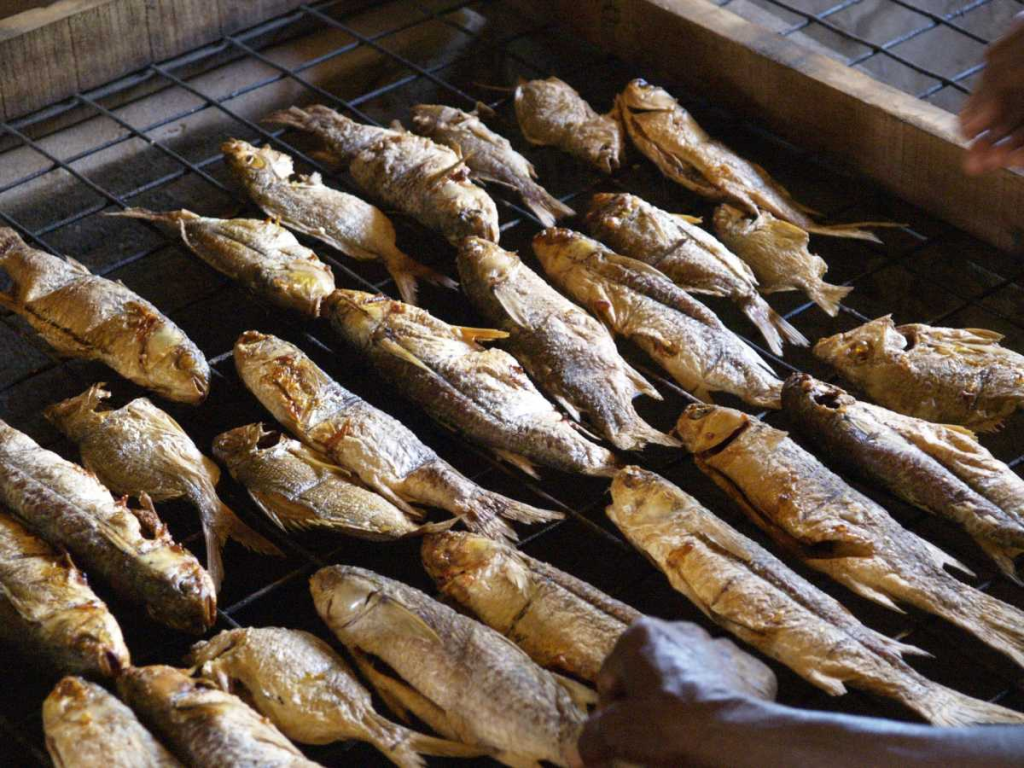
Fish preservation through a solar drying-cooling technology value addition and Quality Assurance system
Two state agencies and a German company unveiled a solar drying-cooling system for small-scale fishermen along the coast to help them reduce post-harvest losses.
Kenya Marine and Fisheries Research Institute (KMFRI), Kenya Industrial Research and Development Institute (KIRDI), Innotech and Fraunhofer from Germany, and the Technical University of Mombasa TUM are leading the project.
The project will assist fishermen in Mombasa, Kilifi, Lamu, and Kwale counties in selling their catch at a profit because they will be able to store the fish for an extended period of time while looking for markets.
Around 48 Beach Management Units (BMUs) ranging from Lamu to Vanga and LungaLunga will benefit.
To produce ice and dry fish, a portion of the project has already been installed in Mwazaro, Pongwe-Kidimu, and Lunga Lunga Kwale County.
The solar cooling and drying project, according to KIRDI’s lead researcher, Linus K’Osambo, is completely off the grid and targets small-scale fishermen in remote areas who operate from small-scale landing sites.
With a fish deficit of over 300 tonnes in the country, no fish should go to waste, said K’Osambo, adding that the project will aid in preserving the harvest.
“The project was designed to intervene and prevent post-harvest losses of fish, especially given that we are having a fish production deficit. So we’re not supposed to lose any fish that we farm or catch,” K’Osambo said.
According to him, the project is intended to produce ice to assist farmers and fishermen in preserving fish as they are caught, as well as shelf-stable fish that can reach inland markets through high-quality drying.
“The goal is to have systems that can be installed in areas where our power grid cannot reach. We plan to build 48 BMUs from Lamu to Vanga on Kenya’s South Coast,” said K’Osambo.
He added that the project would also focus on capacity building and fish handling, both of which are necessary for Kenyan fish to be sold in high-end markets.
“We must produce high-quality fish that adheres to quality standards. So this project is doing onsite capacity building, producing ice, drying fish, and marketing it,” K’Osembo added.
Dr James Mwaluma, the KMFRI’s Director for Oceans and Coastal Systems in Mombasa, said the project will benefit Tana River fishermen who have a bumper harvest of bronze and snappers.
Mwaluma said during the peak season, Tana River fishermen suffer massive post-harvest losses.
He said the project would be beneficial as they seek to introduce mariculture farming (ocean fish farming), with a hatchery already established in Shimoni.
“The main challenge for mariculture production has been a lack of seeds. So, in our strategy, the project will be useful when there are a lot of harvests because it will help farmers preserve the fish so that they can reach a wider market,” Mwaluma added.
Grow food for export for our counties and take the example of Balminder Singh in Gem
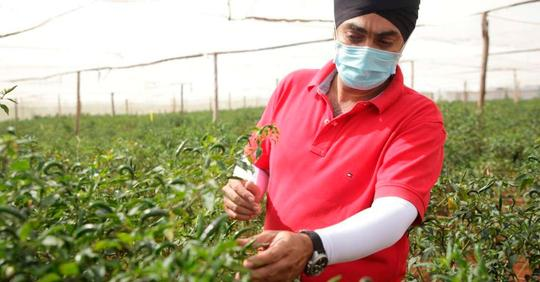
Nyabeda village in Gem, Siaya County, is not the typical place where one expects to find a horticulture produce exporter.
Being in the lake basin, fishing is the major economic activity in the area as well as subsistence growing of maize, beans and some vegetables.
But Balminder Singh, a mechanical engineer, has found Nyabeda a perfect place to grow chilli, which he farms on part of his leased 10 acres.
He has planted Demon F1 variety of chilli inside shade nets on four acres. Singh started the venture in May last year after doing market research on the varieties needed for export market and their viability of growing in the region.
“A friend in the UK saw on Facebook that I was selling them. He convinced me to venture into chilli farming for export,” says the father of two, who got export permits from Kenya Plant Health Inspectorate Service (Kephis) and Horticultural Crops Directorate.
Drip irrigation
To start, he bought seeds and contracted a company in Naivasha to germinate them into seedlings for him.
“The seedlings were brought to my farm in Siaya after about 35 days and we planted them sometime in June having used the previous month to prepare the farm,” says the 45-year-old.
A worker dries chilli the produce on the farm.
The crop is grown using the drip irrigation system, where water is collected from a nearby spring, pumped into tanks and released to the plants.
“We have some 54,000 Demon F1 variety chilli plants grown in shade nets. For pest and disease control, we use integrated management methods where we have set up blue, yellow and white sticky traps on the farm to curb aphids, thrips and white flies.”
Singh adds:”Kephis is very strict on the issue of plant safety for the export crop. Haphazard use of pesticides is discouraged that’s why we have employed four people to scout for pest and diseases on the farm daily.”
He had his first harvest in September last year, picking 1,000kg to 1,500kg every week.
Thanks to good farm practices, the farmer anticipates to harvest the crop for up to 18 months.
“We feed the crops every week through the fertigation system. We offer them potassium, calcium and magnesium nitrate. This would enable us achieve the long harvesting period.”
Singh was among farmers who last week saw their fresh produce exported through the Kisumu International Airport for the first time. A cold storage facility has been set up at the Old Kisumu Airport to facilitate the export.
The storage facility comes as a relief to farmers like Singh, who have been spending more to transport their produce to JKIA in Nairobi for export.
Refrigerated truck
“Months ago, I had to take the produce in a refrigerated truck from the farm to Kenya Industrial Research and Development Institute (Kirdi) plant in Kibos, Kisumu.
Then I had to organise how it would be transported by road to JKIA, which was expensive,” recounts Singh, who employs seven workers.
Kephis Senior Seed Inspector Joseph Oyieko says the launch of the Kisumu cargo flight gives farmers in the Lake region an opportunity to venture into horticulture farming, particularly growing of fruits, vegetables and crops like chilli as well as flowers for the export market.
Oyieko says the region has the potential to produce chilli, avocado, mobydick flower, okra, brinjals or eggplant.
“Farmers need to diversify and grow more crops that can earn them good money. With the right guidance and paper work, it is possible to export our local vegetables for the outside market,” he says.
In the next five years, Singh hopes to have diversified into crops like okra, French beans and brinjals.
“We are also thinking of doing value addition for chilli by making sauces, flakes and powder for the commercial market,” he says.
The big picture will depend on how the counties work together. One of the main problems in Nyanza is how to fully use that massive resource called Lake Victoria which is now being swallowed by the hyacinth.

First and foremost can we just get rid of that hyacinth menace in the lake?
There has been so much talk about it and nothing is being done to deal with the problem. Can the governors in the region get together and work with the national government to get just completely remove hyacinth from the lake which means so much to the people who live there and the country as a whole?
Secondly, Kenya as a country and the governors of the region need to maximize the economic value of the lake. Yes, we have fish production which can be improved by building fish processing plants in the region instead of sending the fish from Lake Victoria to Thika for processing to be exported.
The other big economic value of the lake is in transportation. We have the potential of shipping stuff to Uganda from the SGR system. That has to be accomplished as soon as possible. The other area of transportation is that during the colonial days, there were very good ports or bays all over Lake Victoria, and that made moving people and goods in the region very fast and cheap.
Kendu Bay town today is in ruins because nothing is happening there.
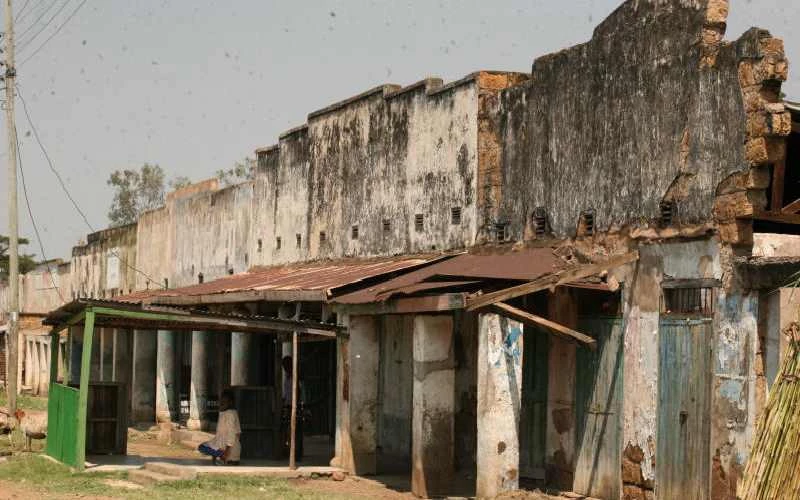
Kendu Bay town was built around the lake transport system through Lake Victoria moving a lot of products from South Nyanza to Kisumu and through the country. Strangely these were thriving means of transport built by the British colonial government in Kenya. Kisumu port was a big centre of transportation not just with moving goods to Uganda but also within the region. They had another transport link at Nyilima in Asembo Bay in Rarieda constituency. There were lake transport links to Usenge which was the nearest link to Uganda through Lake Victoria.
Asembo Bay is now dead and gone. These are the real projects the Nyanza governors have to deal with to develop the region.
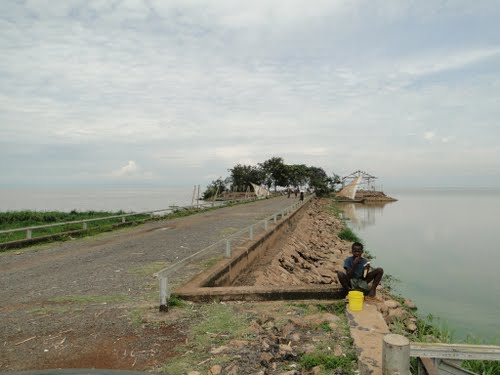
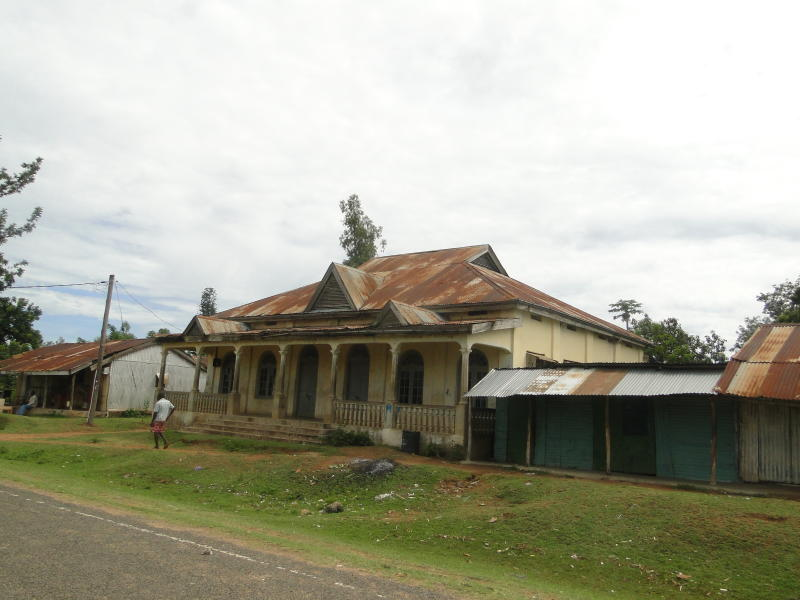
This is Asembo Bay today which was a thriving town and a key transport connection within Lake Victoria.
It says a lot that the Lake transport system thrived under the British colonial government and has been dead since independence and now Lake Victoria is almost a dead asset for the country. It is just shameful.
If we can rebuild the ports around the lake starting with Kisumu then build Kendu Bay and all the needed joints in South Nyanza and rebuild Nyilima port in Rarieda and another one in Usenge we can establish a system where products are moved to Kisumu from all over Nyanza and Busia county very fast and very cheaply. The lake is there for us but we have to figure out how to build our development plans around it.
Here is what Museveni is doing with the lake on his side in terms of transport while we are sleeping on one of our biggest assets as a country.
I am looking at the possibilities where we build big time food processing plants in Homa Bay and have those products transported through the lake to the airport for export. Same with products from Siaya coming through Nyilima and Usenge. Those are the things we have to do if we want to think big and stop worrying about how to get Unga every day.
Here is what Museveni is doing on his side of the lake. Can we learn something from him? People are travelling across the lake and they have terrific lake cruisers for tourists. It looks very good.

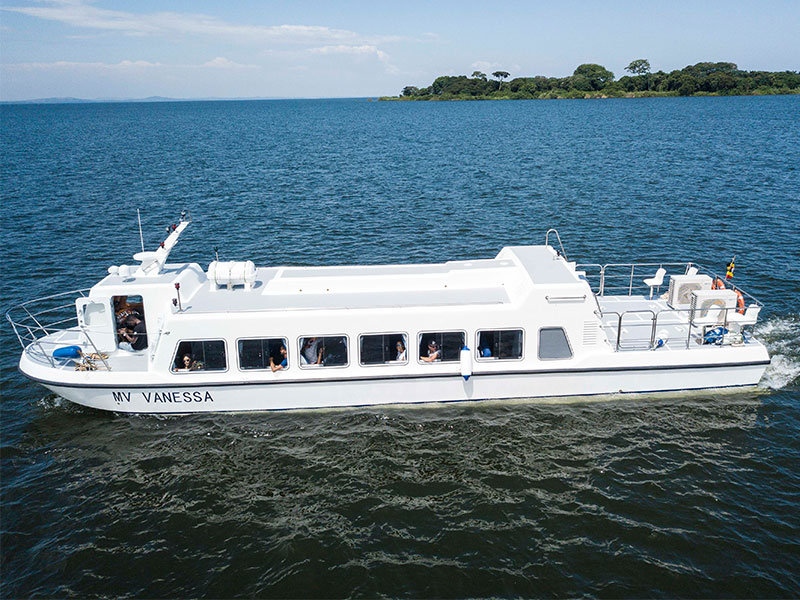
And here is what the Tanzanians are doing with their part of the lake. How about Kenya? Nothing going on since the colonial government which actually put resources in Lake Victoria for their economic interests. For independent Kenya, Lake Victoria is just about those annoying Luos. That is how dumb our governments have been about such a big asset for the country.
Here is MV Sengerema in Mwanza using the lake for very comfortable transport and tourism. It looks great. Doesn’t it?
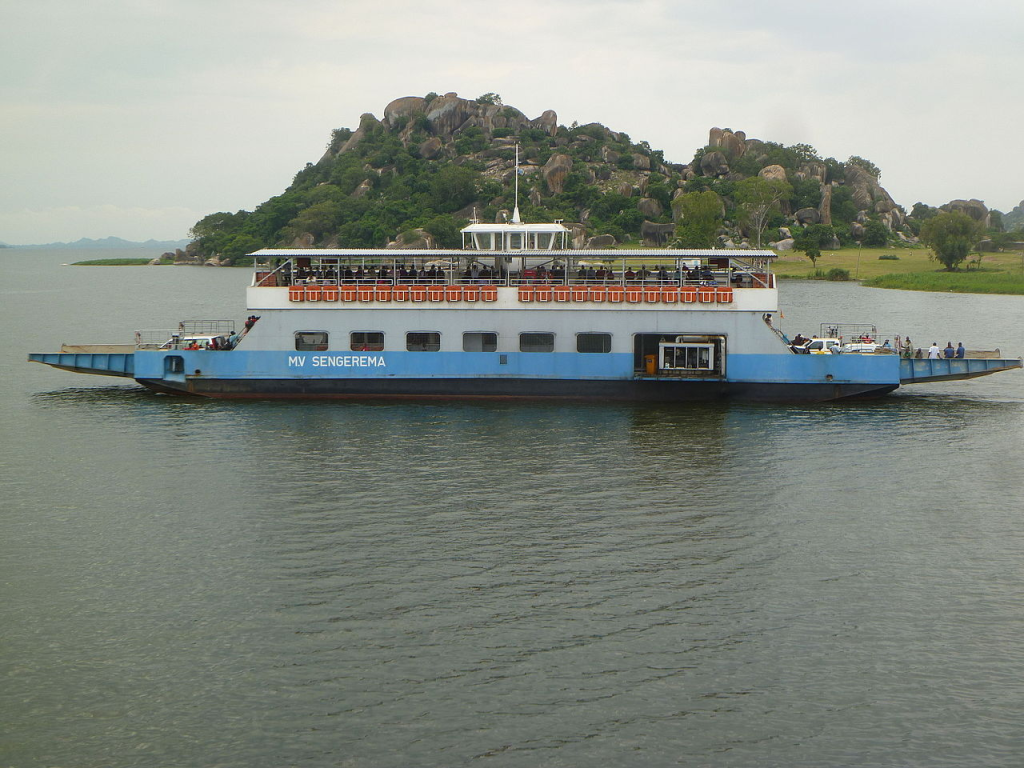
In 2009, KIS signed an agreement with the government of Uganda, to manage transport services on Lake Victoria. Both ferries make 10 trips a day, making 4,900 trips a year. MV Ssese is the best model in Uganda and Lake Victoria says John Opiro KIS Managing Director.
Right now Luanda Kotieno has a very good ferry transport to Mbita and South Nyanza in general. I enjoyed the trip with the ferry when me and my family went across the lake and we wanted to go to Rusinga Island the home of one of Kenya’s greatest heroes Thomas Joseph Odhiambo Mboya.
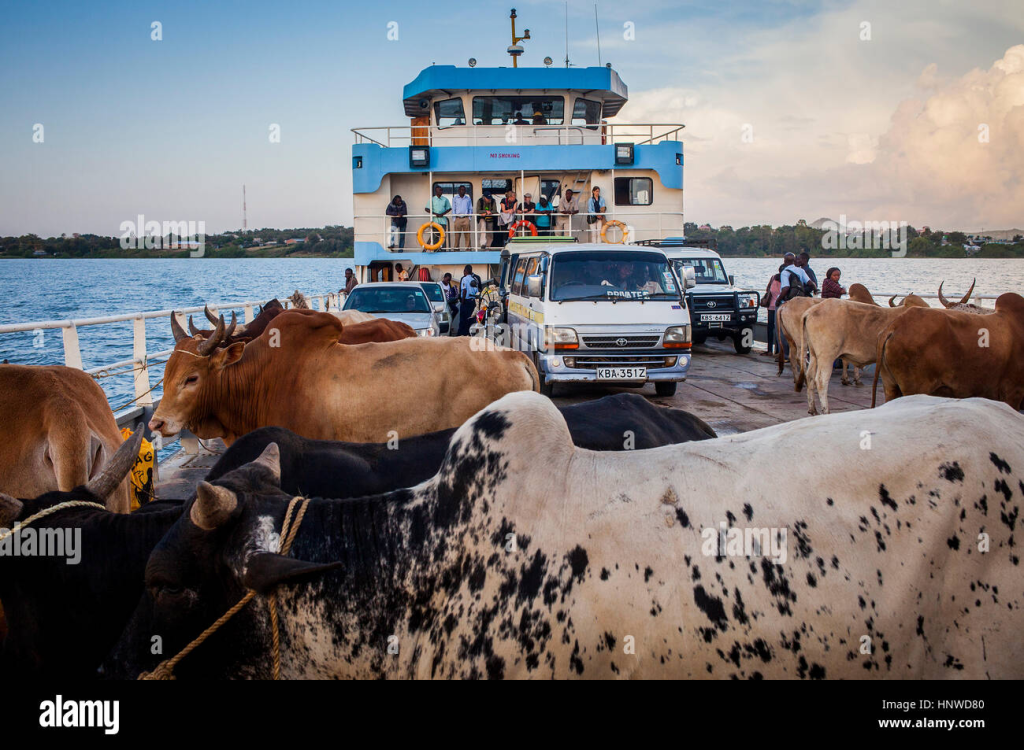
Here is that beautiful place called Rusinga Island and going there made me discover the fantastic ferry system from Luanda Kotieno in Rarieda to South Nyanza. My sister happens to live very close to Luanda Kotieno so when we came back from the trip we invaded her home for some real good food before we travelled back to Bondo town where we live.
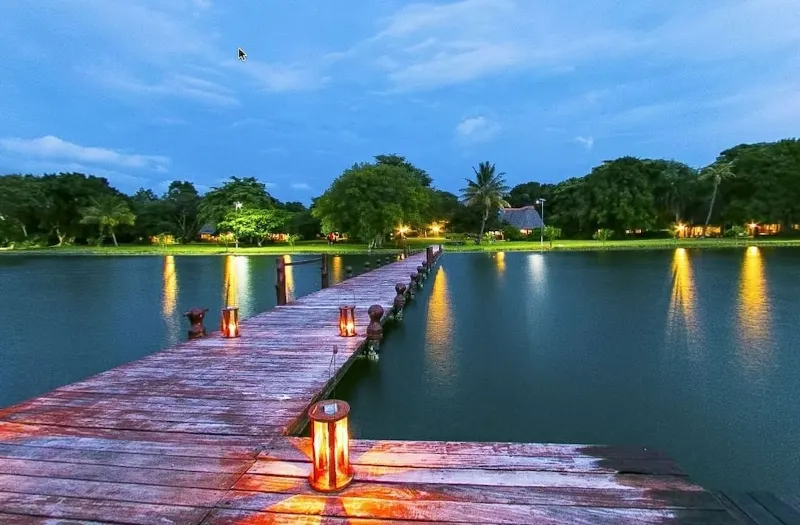
Nyanza actually has some amazing tourist attractions and if we can make lake transport with ferries and other enjoyable water transportation through the lake many tourists with love to go there and that would be a great success for the region and Kenya.
We also have the magnificent Ruma Park in Homa Bay.
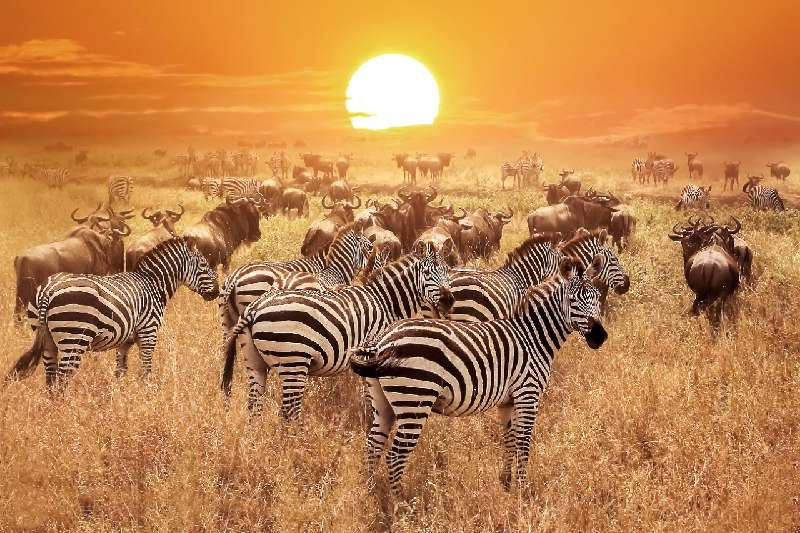
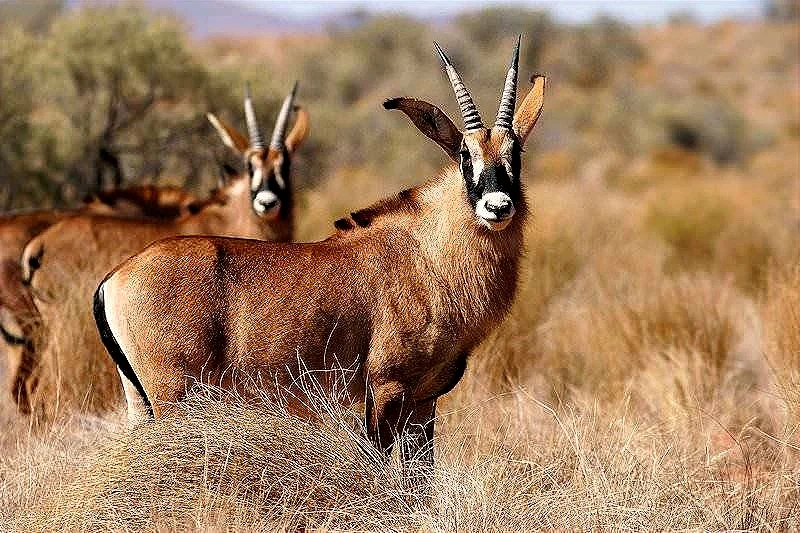
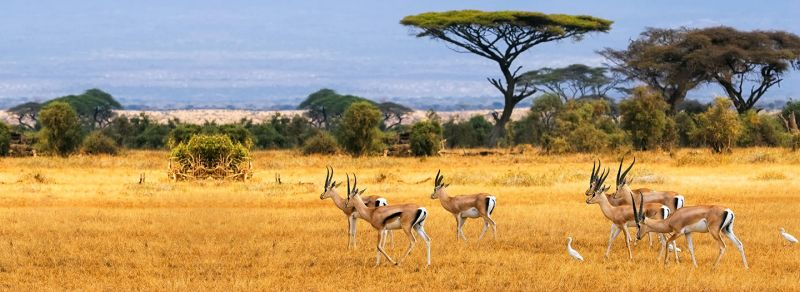
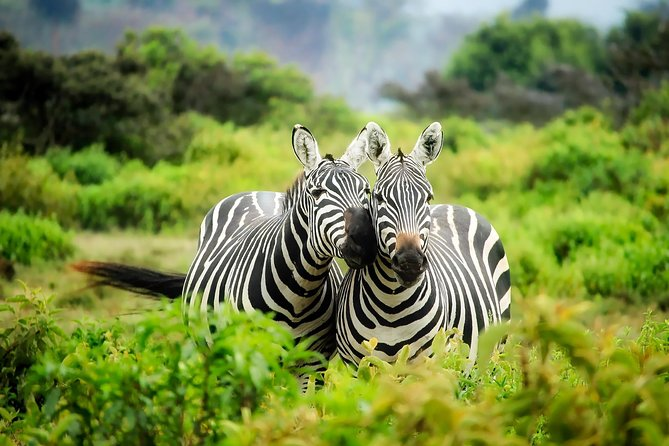
And here is Ndere Island National Park in Lake Victoria which is just beyond beautiful.

And make sure you do not forget Kit Mikayi in Kisumu county which now has a resort built there. It is called Ciala resort and it gives a very good view of Lake Victoria. I wish they could develop lake sports there for tourists.
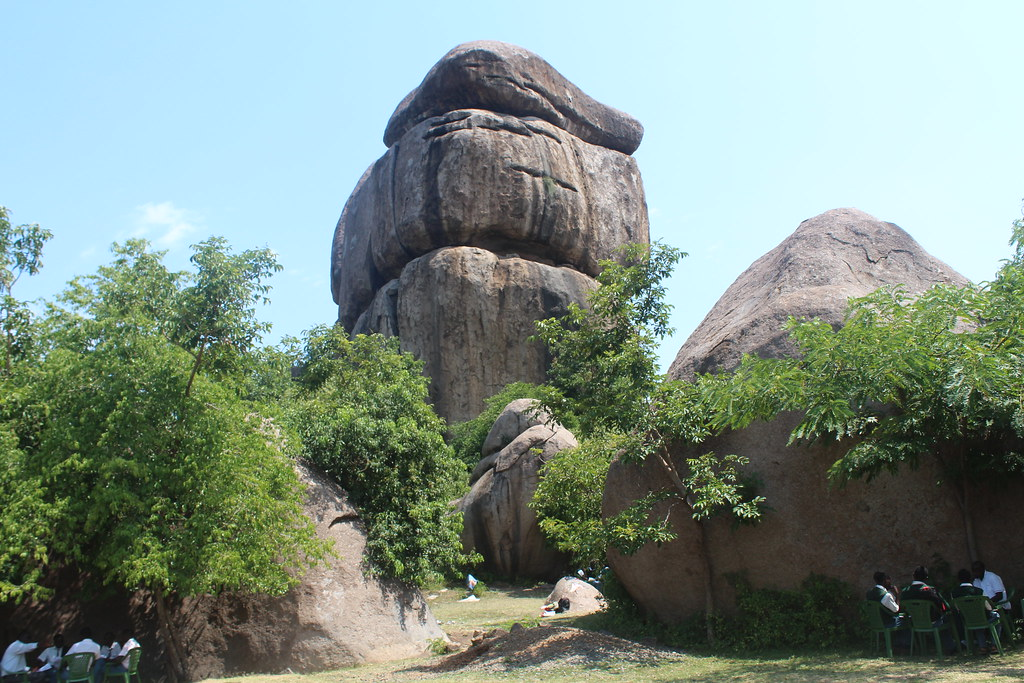

In Kisumu, we have the incredible Impala Sanctuary and the simple message is that Nyanza has a great tourist attraction but it is not marketed at all. However, the governors can get that going and they can use Lake Victoria having a good transport system to take tourists to those places and enjoy water transport. Does anybody know why Florida is a big destination for tourists all over North America? They have water on their beaches and they have built a huge tourism industry around that place and make people enjoy themselves in the lake.
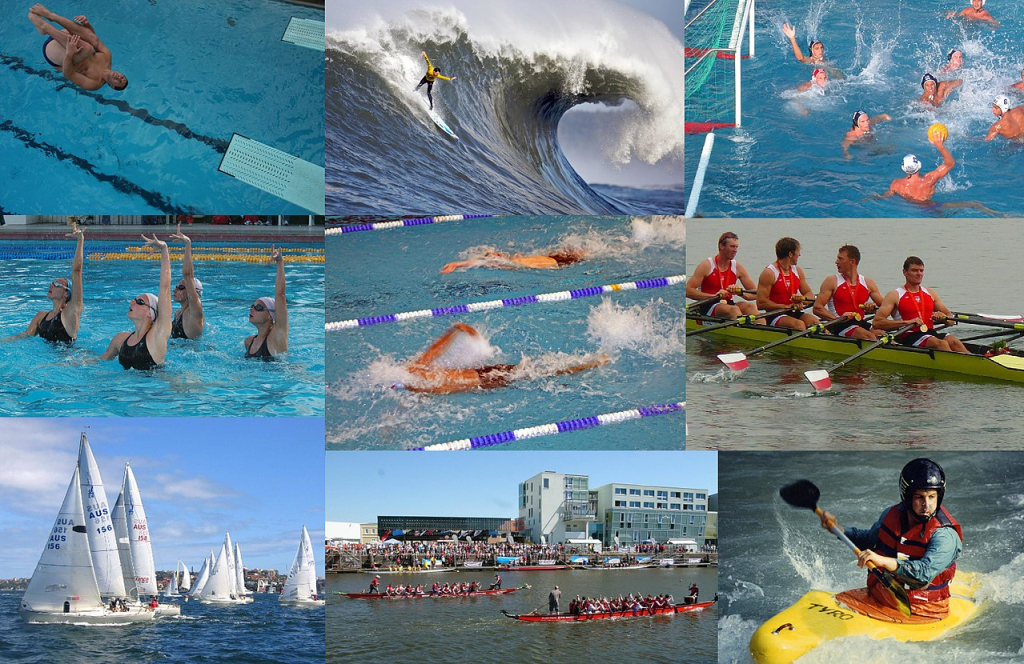
And here is our big Impala sanctuary in Kisumu City which is like what the National Park in Nairobi City. In fact, Kenya is the only country in the world that has national parks in their cities. It is a great asset for our country. Kisumu has not done a good job of promoting the Impala Sanctuary in the city and it is just nosy people like me who take people there.
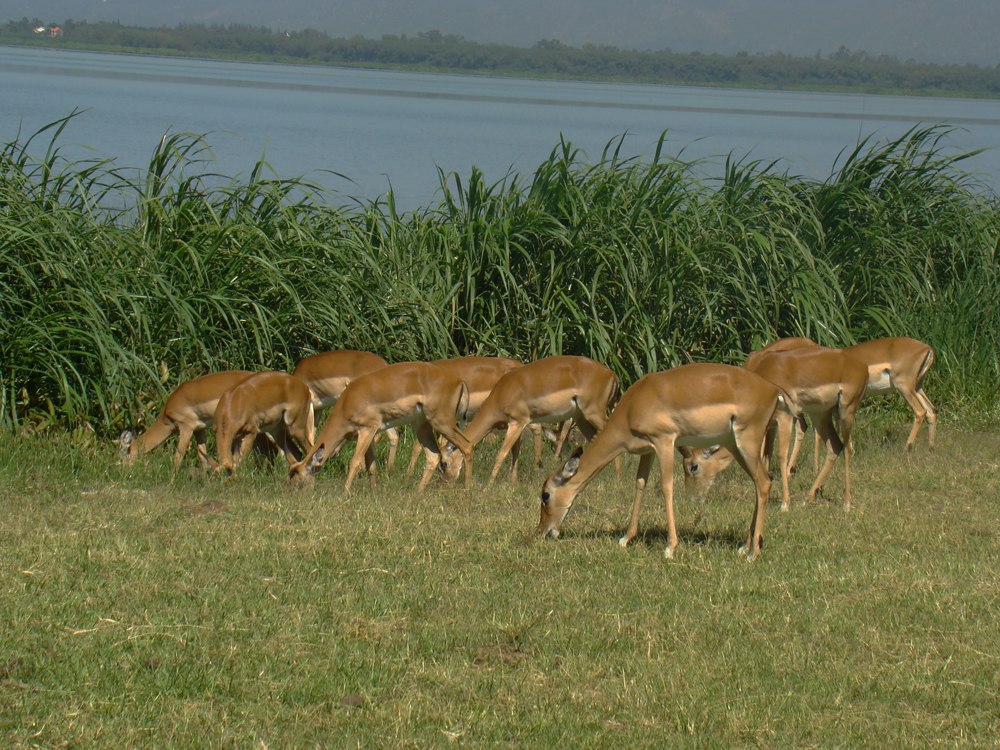
And something like the Nam festival was really lively and it should be promoted every year and include water sports activities and lake tours and food.
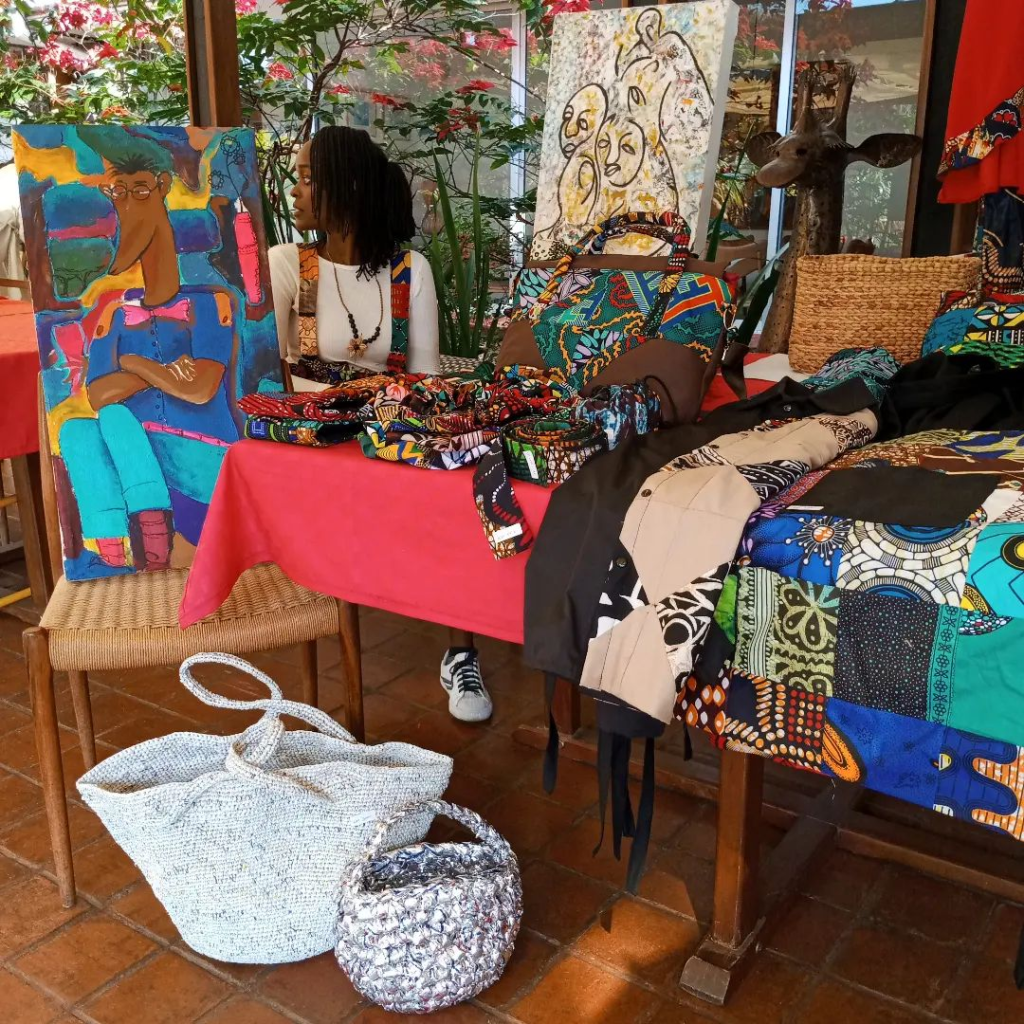
The other thing that the Nyanza governors can team together to do is to attract international funding to develop solar energy in the region. Everybody is yelling about climate change and planting trees here and there to take pictures.
A real effort on climate change can be launched in Nyanza to involve NGOs around the world to build a workable solar energy project in the region. We live at the equator for God’s sake and yet countries in Europe and North America that only have sunshine for a few months every year are doing everything to build solar energy capacity. We have the sunshine in Kenya every single day of the year. Can we at least use it for solar energy?
If we come up with good plans for solar energy and building charging stations for electric vehicles and motorbikes we are going to attract funding from across the globe as the whole world struggles with climate change. I am appealing to our Nyanza governors to come up with a plan to get funding for solar energy production. We are going to get the support if we develop smart plans. The whole world is looking for clean energy and Kenya is in a perfect position to attract international funding for it. Planting a few trees or adopting forests to take pictures is not going to do anything for the country in the war against climate change.
I am looking for a future where the entire energy and electricity in Bondo Town is from the solar energy system. I learned about this from Josephine, my sister who is building homes in Bondo town. In the houses that she rents out, she uses solar electric system. It is expensive to set it up but in all her houses power never goes off which in Kenya is a nightmare. You expect power to go out for a few hours every day.
Please governors, introduce new food products in your regions. I told my sisters that I am tired of growing maize and beans. We have been doing that in Nyanza for hundreds of years. Can we expand our farming and food production?
Unlike in the past when maize farmers were stranded with their bumper produce, they are now assured of a ready market.
The Mokwa maize plant is expected to reduce post-harvest losses incurred by farmers, especially from Gwassi region, who have been lacking adequate markets.
The plant will boost their income per capita and save thousands of people from unscrupulous middlemen who have been buying farm produce at throwaway prices.
“We are happy the miller — with a capacity to crush 30 tonnes of maize per day — will produce ‘Mokwa’ brand of maize meal at affordable rates,” says Omollo.
This is the first project of its kind to be initiated and launched by the county government in the Western Kenya village since the dawn of devolution. The Mokwa plant seeks to not only add value to the maize produced in the region but also to create more wealth and job opportunities across the production and supply value chain.
“We want to see more such factories in our midst to spur domestic and economic growth,’’ says Owino.
Let me give you an example of something called dryland arrowroots. It could be a great product for Nyanza folks and it is great food. Nduma is very good food. I got to know about arrow roots when I was in Kamiti prison. Our prison boss in my group which was supposed to do laundry had an arrowroot farm next to his house and he used to take us there to take care of his nduma and help harvest them.
The first thing that happened when we went there was his kids screaming at us. “Wafungwa wana ongea” they kept yelling. Apparently, their father and other prison guards had told them that prisoners were animals so they were shocked that we could actually talk and we were in fact human beings.
But Nduma is a great food product and our governors need to look at how to bring the crop to Nyanza starting with establishing big nurseries for the dryland arrowroot so farmers can come there and get stuff and go plant it on their land. Once they get used to it they will love it and grow a whole lot of it.
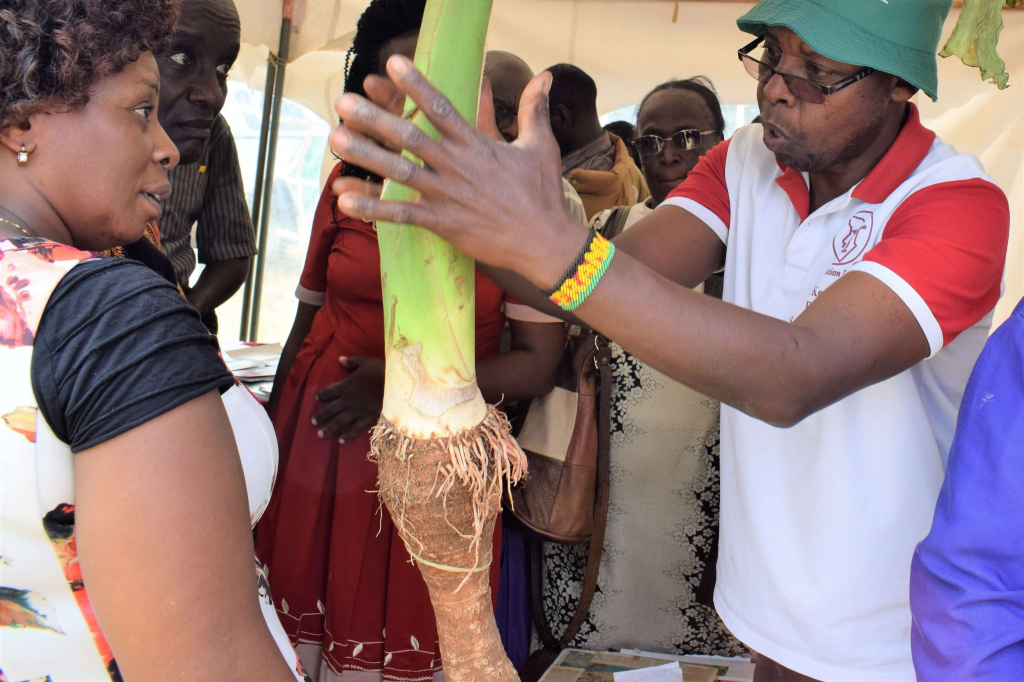
The dry land arrow root variety is ready for harvest after six months which is an advantage over other varieties which take up to nine months. It also produces s long tubers measuring up to 70 centimeters. Since it is heavy, it is popular with business people and consumers
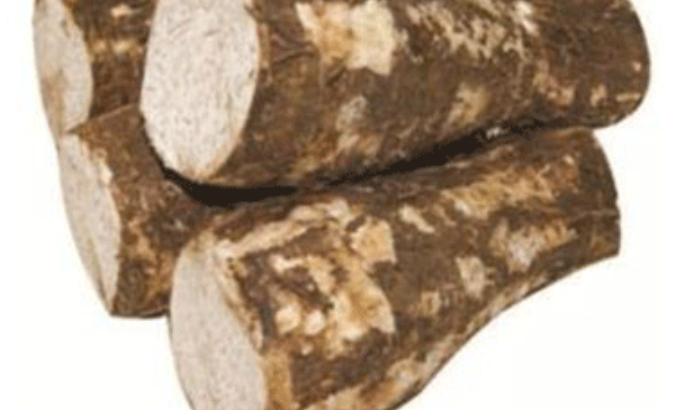
This is what Oxfam says about the great benefits from growing arrow roots and with this new version from Rwanda, we can grow arrow roots all over Nyanza. The dryland arrowroot can grow anywhere and it can be used for everything including producing baby-feeding formulas at an industrial level. You can eat everyday with stew and you can make bread with it.
Oxfam is very sure it is a great product that Kenyans should bring to their farming regime.
According to Daily Nation (Seeds of Gold) arrowroot farmers in Kenya can now double their yields, thanks to a new high-yielding and fast-maturing variety from Rwanda that has an average yield of 3 tonnes per acre in just six months.
The variety is available at Kalro, Thika. This is good news for farmers who are currently harvesting an average of 1.68 tonnes of arrowroots from the same size of land in eight months.
The hybrid variety requires less water compared to the traditional one, which is popular in the Kenyan market and hence can survive in semi-arid regions.
However, there is a sudden high demand for the tuber in the country due to increased health consciousness. Arrowroot leaves are rich in vitamins and minerals.
They are a good source of thiamin, riboflavin, iron, phosphorus, and zinc, and a very good source of Vitamin B6, Vitamin C, niacin, potassium, copper, and manganese. Arrowroot corms are very high in starch and are a good source of dietary fiber.
One acre of upland arrowroots technology grown tubers will accommodate 29,333 plants, which will yield 29,333 tubers sold at Sh 20 each, which translates to Sh 586,660 gross income.
Build processing factories in Nyanza. It is crazy how we just throw away our fruits like mangoes because they are rotting. When traveling from Kisumu to Bondo at Ndori market there are traders trying to sell you a whole bag of mangoes for pennies because they are going to throw them out if they don’t sell them.
We buy water with fruit taste manufactured in Thika and other places and we cannot process our own fruits into juice and we just throw them away. That has to stop. Food processing can be a big part of Kenya becoming industrialized as a country. We grow a lot of food products and we just sell them raw which has a very limited time restriction. If we can process what we grow we can use the products ourselves and export them. Let’s start with our fruits and process that into juice then we can move from there.
People were very excited to see this unga-producing factory in Homa Bay. Value addition cannot just be talk and talk it has to be put into action and the Homa Bay governor was doing a great job for the people in the county. We need this kind of staff all over Nyanza. Turn your maize into unga and then you have a good market for it.
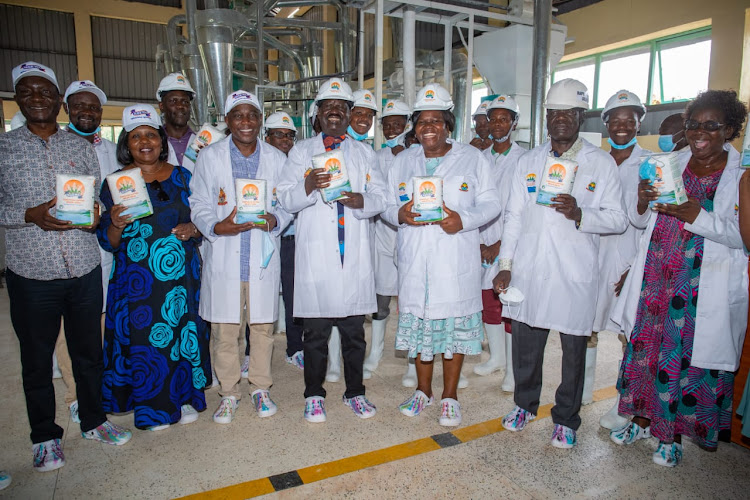
Food processing and building manufacturing industries is the way forward for Nyanza. We have the workforce and the skills to do that but we need the planning and resources to make it happen.
The other day I saw something very impressive and as a person who works and lives in Canada which is the largest producer of Canola oil products with all the technology to process the oil from the plants I took it very seriously.
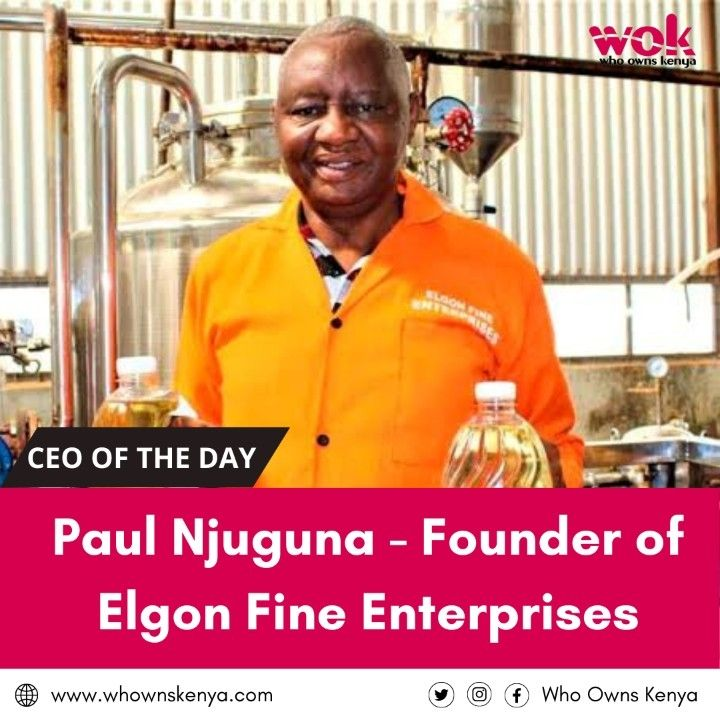
“When I started, I was doing very little, intermittently processing some 60 kilos at a time using a cold presser that I bought at Sh20,000 but when I was approaching retirement, I decided to scale up the venture,” says Njuguna, who once worked at Agricultural Development Corporation (ADC) as the engineering manager.
His processing plant hosts pressing and refining machines that cost him some Sh6 million, with commercial production starting in 2019.
Njuguna says the total investment in the business named Elgon Fine Enterprises Limited stands at Sh16 million.
“I am now processing 90 tonnes of canola, sunflower and soya in a year and my goal is to hit 300 tonnes, which is the capacity of our machines. But first, we have to expand the market of the oils and the by-products and refine the system,” says the 63-year-old.
You look at what that smart guy is doing in Kitale and you have a sense we can build a whole canola oil processing all over Nyanza. Get everyone who owns land to have at least one or two acres of canola oil and sunflowers. Set up the processing companies and ask me to get you canola oil processors from Canada and we are in business.
These are the kind of things I am looking at as a 62-year-old dude who should retire in a few years. I keep telling my son here in Canada that I am going back to Kenya and will come to visit him with his family in Canada from time to time. He is free to move to Kenya with me because he has so many friends and family there and they really care for each other.
This is what canola oil processing machinery in Canada looks like and the country is the biggest supplier of canola in the world.
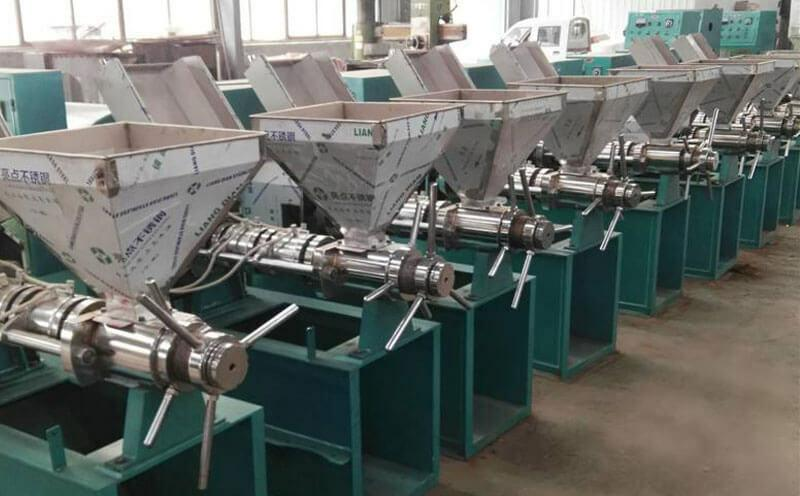
Something that really annoys me and may lead me to a fistfight with our governor James Orengo if we ever meet is the unending chaos at Yala swamp.

Yala swamp is the biggest water catchment area for the rivers flowing into Lake Victoria. You destroy it then a lot of dirt and garbage enters the lake and pollutes it. It is a natural cleaning system for the water we use as humans.
So any development around there has to be carefully done to make sure the water system works. Don’t just give the place to somebody to grow whatever they want and make money.
We also have fish farming in Lake Victoria which we will deal with later. The bottom line is that if Nyanza don’t develop fish farming in the lake the entire Lake Victoria can be colonized and occupied by fish farmers from around the world because anybody is free to set their fish farming gadgets in the lake and they can take the whole lake.
The other thing that really annoys Nyanza folks is the madness around Nyando and Kano plains. 60 years of talking about it and nothing has been done.
The last thing I want to say is that Nyanza can also produce flowers around the lake for export. Who said that flowers can only be produced around Lake Naivasha? Let’s build our flower farms around Lake Victoria and hit the international markets. The opportunity is there and we need our governors to get there and establish community flower farming and not wait for the big corporations. They already have Naivasha and they can keep that. Bring on Lake Victoria flower farming project.
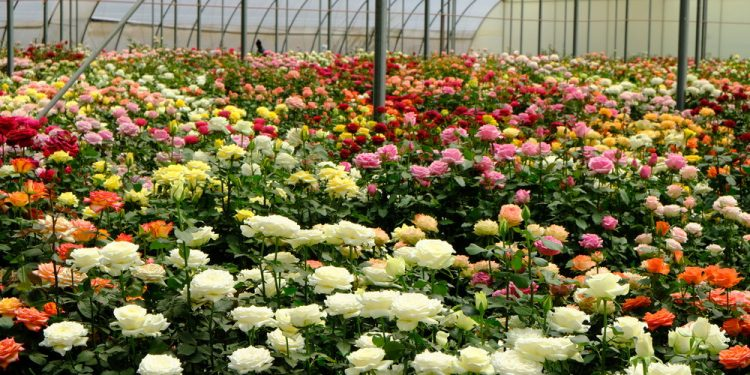
We can grow flowers around the lake. We have the water. We have the land and there is a market for flowers around the world. What is stopping us from doing this? That is my question to all the governors in Nyanza as they go for that development meeting. We need to think out of the box and the time to do that is right about now. Let’s go to work.
Every county in Kenya has specific gifts and potential to develop but our politicians are always sleeping on the job.
Look at Kiambu, a huge county surrounding our capital city. Kiambu could be an industrial giant in Kenya with that market in Nairobi of millions of people. What are they doing with it? Pretty much nothing other than petty fights and now they have this war against alcohol and drugs. If people have real opportunities to grow and thrive as human beings you don’t have to worry about those things because people will overcome those problems by themselves.
So this is my public participation in developing Nyanza and I am going to send the document to every governor and MCA in the region. It is time to go to work.
I also saw this new invention where they have produced a gadget to keep mosquitos away from people camping out and don’t want to be bothered by mosquitos. The Kenya government should talk to this company and tell them we have a life and death issue with mosquitos and it is not a camping issue.
We use Mosquito nets with something that keeps the mosquitos away before they kill us. How about bringing the mosquito repellent in the nets to this new gadget then we can manufacture millions of that in Kenya and Mosquito and Malaria is gone and we are making money selling the new gadget which could be way better than the mosquito nets.
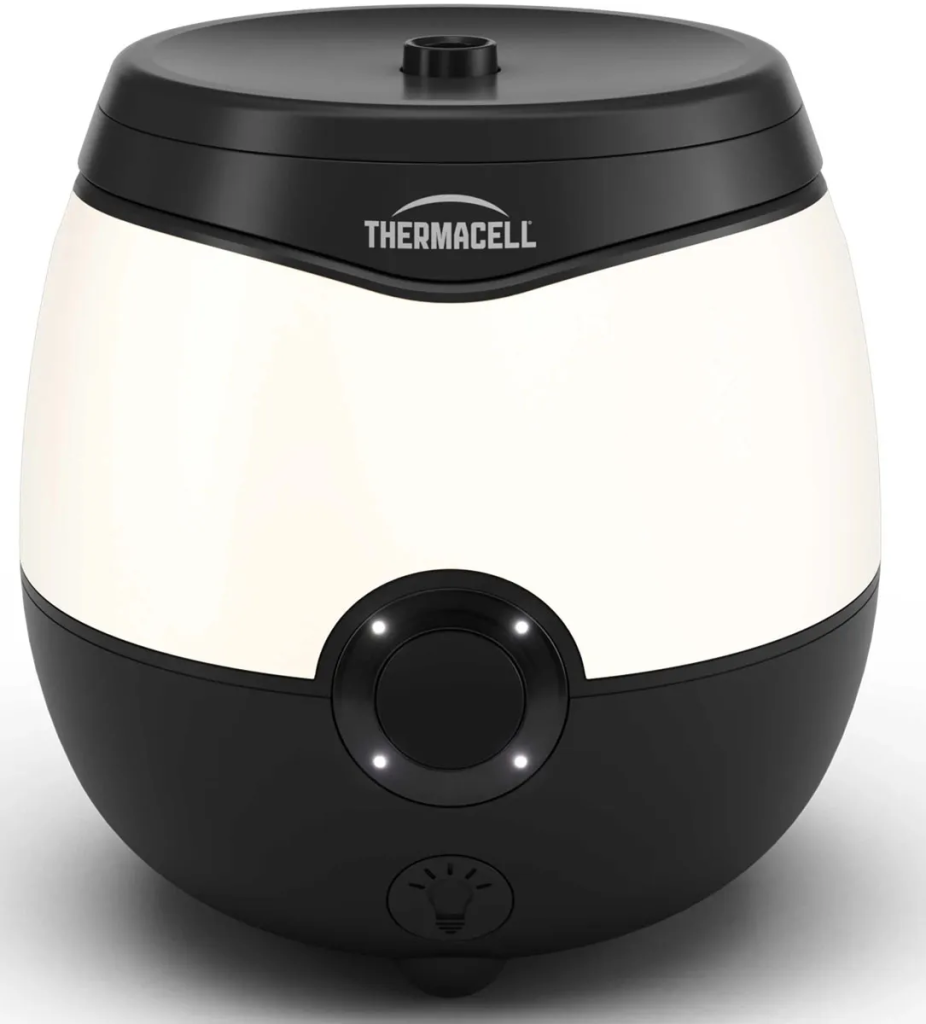
The Thermacell E-series is easy to use and provides hours of scent-free, mess-free mosquito defense. The largest area repellent zone available from a single repeller, the EL55 provides a 6 m (20 ft.) zone of advanced mosquito repellent. Features up to a 9-hour battery.
Before I forget, plant bamboo trees everywhere in Nyanza. Plant them along River Yala. Plant them around the lake and plant them as fences in your farm and homes. Bamboo trees can be used for so many things like construction, fencing and more importantly for making furniture of all types. You just go and cut them from the bushes and you have an asset in your hands.
